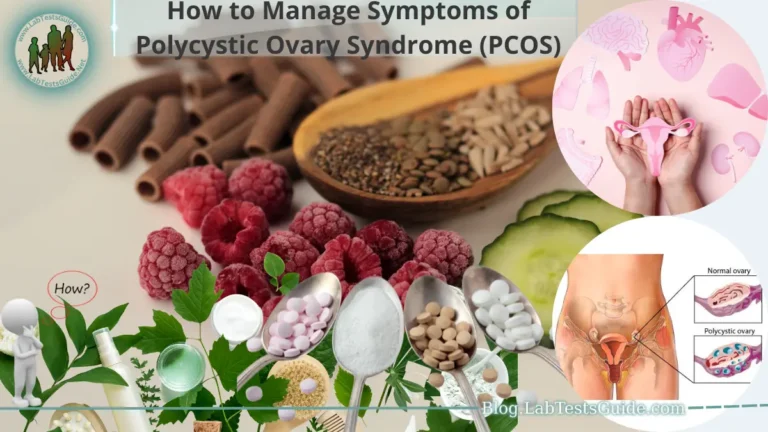Muscle pain and soreness are common experiences that most people encounter at some point in their lives, whether from intense exercise, physical labor, or even sedentary habits. Understanding the causes and effective methods for relieving muscle pain is crucial for maintaining overall well-being and ensuring a smooth recovery process. This comprehensive guide aims to provide you with a range of strategies to alleviate muscle discomfort, enhance recovery, and promote overall muscle health.

In the first section, we will delve into the nature of muscle pain and soreness, exploring the various factors that contribute to these sensations. By gaining a better understanding of the underlying causes, we can develop targeted approaches for relief. Additionally, we’ll emphasize the importance of proper recovery practices and their role in preventing long-term issues related to muscle strain. From there, we will explore a diverse array of home remedies that have proven effective in easing muscle pain and soreness. These include rest and recovery techniques, ice and heat therapy, gentle stretching exercises, self-massage techniques, and the use of over-the-counter pain relief medications. Moreover, we’ll discuss the significance of proper nutrition in muscle recovery and recommend foods that promote healing and reduce inflammation.
What Is Muscle Pain and Soreness?
- Muscle pain, also known as myalgia, refers to the discomfort or soreness experienced in one or more muscles of the body.
- Muscle soreness typically arises after engaging in physical activities that the body is not accustomed to or during intense exercise sessions.
- It can manifest as a dull ache, tenderness, stiffness, or sharp pain in the affected muscle groups.
- Muscle pain and soreness can occur due to micro-tears in the muscle fibers, inflammation, or the accumulation of waste products like lactic acid.
- Delayed Onset Muscle Soreness (DOMS) is a common type of muscle soreness that emerges 24 to 48 hours after intense exercise or unaccustomed physical activity.
- Muscle pain and soreness can affect individuals of all ages and fitness levels, including athletes, recreational exercisers, and individuals with a sedentary lifestyle.
- Common factors contributing to muscle pain and soreness include improper exercise techniques, overtraining, lack of warm-up or cool-down, and inadequate rest and recovery periods.
- While muscle pain is often localized to specific muscle groups, it can also radiate to surrounding areas or cause referred pain in other parts of the body.
- In some cases, muscle pain and soreness can be a symptom of an underlying medical condition, such as fibromyalgia, chronic fatigue syndrome, or inflammatory disorders.
- Management of muscle pain and soreness typically involves a combination of self-care techniques, including rest, gentle exercises, proper nutrition, and, if necessary, medical interventions like pain relievers or physical therapy.
How to Relieve Muscle Pain and Soreness:
- Rest and Recovery: Allow your muscles adequate time to recover after intense physical activity. Avoid overtraining and ensure you incorporate rest days into your exercise routine.
- Ice and Heat Therapy: Apply ice packs to the affected area for 15-20 minutes in the first 48 hours to reduce inflammation. After 48 hours, use heat packs or warm compresses to promote blood flow and relax tense muscles.
- Gentle Stretching Exercises: Engage in light stretching to improve flexibility and reduce muscle stiffness. Avoid aggressive stretching or bouncing, as it may exacerbate the pain.
- Massage and Self-Myofascial Release: Consider getting a massage from a professional to relieve muscle tension and promote relaxation. Alternatively, use foam rollers or massage sticks for self-myofascial release at home.
- Epsom Salt Baths: Soaking in a warm bath with Epsom salts can help ease muscle soreness and relax the body.
- Over-the-Counter Pain Relief Medication: Non-steroidal anti-inflammatory drugs (NSAIDs) like ibuprofen or acetaminophen can be used for short-term relief of muscle pain and soreness. However, consult a healthcare professional before taking any medication.
- Proper Nutrition: Consume a balanced diet with an emphasis on foods rich in protein and anti-inflammatory nutrients to support muscle recovery.
Home Remedies for Muscle Pain Relief:
Here are some home remedies you can try.
- Rest: Allow your muscles to rest and recover. Avoid overexertion or engaging in activities that worsen the pain.
- Heat therapy: Applying heat to the affected area can help increase blood flow and relax the muscles. You can use a heating pad, warm compress, or take a warm bath.
- Cold therapy: Cold can help reduce inflammation and numb the area, providing pain relief. Use a cold pack wrapped in a thin cloth and apply it to the sore muscles for about 15-20 minutes.
- Stretching: Gentle stretching can help alleviate muscle tension and improve flexibility. Be careful not to overstretch, especially if your muscles are already sore.
- Massage: Massaging the affected area can promote blood flow and relieve muscle tension. You can use your hands or a foam roller for self-massage.
- Epsom salt bath: Soaking in a warm bath with Epsom salt may help relax muscles and reduce inflammation. Follow the package instructions for proper usage.
- Turmeric: Curcumin, a compound found in turmeric, has anti-inflammatory properties that may help with muscle pain. You can add turmeric to your meals or take supplements after consulting with a healthcare professional.
- Ginger: Ginger also has anti-inflammatory properties that can aid in reducing muscle pain. You can consume ginger as a tea or include it in your diet.
- Magnesium: Low levels of magnesium can contribute to muscle cramps and pain. Consider incorporating magnesium-rich foods like leafy greens, nuts, seeds, and whole grains into your diet or using a magnesium supplement after consulting with a healthcare professional.
- Get enough sleep: Adequate rest is crucial for muscle recovery. Ensure you are getting enough quality sleep every night.
- Stay hydrated: Dehydration can exacerbate muscle cramps and pain. Drink plenty of water throughout the day to maintain proper hydration.
- Compression: If the muscle pain is due to a strain or injury, using compression wraps or sleeves may help reduce swelling and provide support.
Nutrition for Muscle Recovery:
Here are some key nutritional considerations to support muscle recovery.
- Protein: Protein is essential for muscle repair and growth. After a workout, consume a source of high-quality protein to provide your muscles with the building blocks they need. Good sources of protein include lean meats (chicken, turkey, fish), eggs, dairy products, legumes, tofu, and protein supplements like whey or plant-based protein powders.
- Carbohydrates: Carbohydrates replenish glycogen stores in your muscles, which can be depleted after exercise. Opt for complex carbohydrates such as whole grains, fruits, vegetables, and sweet potatoes rather than simple sugars.
- Healthy Fats: Healthy fats are important for reducing inflammation and supporting overall health. Include sources of unsaturated fats like avocados, nuts, seeds, and olive oil in your diet.
- Hydration: Staying well-hydrated is essential for muscle recovery. Drink plenty of water throughout the day, and consider adding electrolyte-rich fluids like coconut water or sports drinks after intense workouts.
- Antioxidants: Foods rich in antioxidants can help reduce exercise-induced oxidative stress and inflammation. Include a variety of colorful fruits and vegetables in your diet, as they are excellent sources of antioxidants.
- Branched-chain amino acids (BCAAs): BCAAs are a type of essential amino acid that can aid in muscle recovery and reduce muscle soreness. You can find BCAAs in certain protein-rich foods or as supplements.
- Vitamin D and Calcium: Vitamin D and calcium are important for maintaining strong bones and muscles. Ensure you get enough sunlight exposure or consider taking supplements if needed, particularly if you have limited sun exposure.
- Omega-3 Fatty Acids: Omega-3s are beneficial for reducing inflammation and promoting muscle recovery. Include fatty fish (salmon, mackerel, sardines), flaxseeds, chia seeds, and walnuts in your diet.
- Timing: Try to consume a balanced meal or snack that includes protein and carbohydrates within 30 minutes to an hour after your workout to optimize muscle recovery.
- Avoid excessive alcohol and processed foods: These can hinder your body’s ability to recover effectively and may lead to inflammation.
Pre and Post-Workout Practices:
Here are some recommended pre and post-workout practices.
Pre-Workout:
- Warm-up: Before starting your main workout, perform a dynamic warm-up to increase blood flow, raise your heart rate, and prepare your muscles for the upcoming activity. Dynamic stretches, light cardio, and bodyweight exercises are excellent choices for a warm-up.
- Hydration: Drink enough water before your workout to stay properly hydrated. Dehydration can negatively impact your performance and increase the risk of injury.
- Fuel with Carbohydrates: Consume a light meal or snack rich in complex carbohydrates and some protein about 1 to 3 hours before exercising. This provides your body with the necessary energy to perform optimally during your workout.
- Avoid Heavy Meals: Avoid consuming heavy or greasy meals close to your workout, as they may cause discomfort or slow you down.
- Proper Clothing: Wear comfortable and appropriate workout clothing and footwear to ensure unrestricted movement and support.
- Check Equipment: If you are using exercise equipment, check it for safety and proper functioning before starting your workout.
Post-Workout:
- Cool Down: After your workout, take 5-10 minutes for a cool-down session. Gradually reduce the intensity of your exercise to bring your heart rate back to normal. Incorporate static stretching to help your muscles relax and prevent stiffness.
- Hydration: Replenish lost fluids by drinking water or a sports drink containing electrolytes after your workout.
- Post-Workout Nutrition: Consume a balanced meal or snack containing protein and carbohydrates within 30 minutes to an hour after your workout. This helps in muscle repair and glycogen replenishment.
- Foam Rolling: Consider using a foam roller or massage stick to help release muscle tension and reduce post-workout soreness.
- Rest and Recovery: Allow your body adequate time to rest and recover between intense workouts. Listen to your body’s signals, and avoid overtraining.
- Sleep: Ensure you get enough quality sleep as it is crucial for muscle recovery and overall well-being.
- Injury Care: If you have any minor injuries or soreness, apply ice or use other appropriate self-care measures to alleviate pain and reduce inflammation.
- Reflect and Track: Take note of your workout performance, how you felt during and after the session, and any progress you’ve made. This helps you adjust your routine and track your fitness journey.
Exercise for Muscle Pain Relief:
Here are some exercises that can help with muscle pain relief.
- Light Cardio: Gentle aerobic exercises like walking, stationary cycling, or swimming can increase blood flow to the muscles, promoting recovery and reducing muscle stiffness.
- Yoga: Yoga incorporates stretching and gentle movements that can help release muscle tension and improve flexibility. It also promotes relaxation, which can aid in pain relief.
- Pilates: Pilates focuses on core strength, flexibility, and controlled movements, making it a suitable option for easing muscle pain and enhancing overall body alignment.
- Tai Chi: Tai Chi is a low-impact exercise that involves slow, flowing movements and deep breathing. It can help improve balance, flexibility, and muscle relaxation.
- Stretching: Gentle stretching exercises can target specific muscle groups, helping to alleviate tightness and soreness. Focus on areas that feel particularly tense or painful.
- Foam Rolling: Using a foam roller can be an effective self-massage technique to release muscle knots and trigger points, providing relief to sore muscles.
- Resistance Band Exercises: Light resistance band exercises can be beneficial for promoting muscle strength and flexibility without putting excessive strain on the muscles.
- Water Exercises: If you have access to a pool, performing exercises in water can provide low-impact resistance and support, easing the strain on sore muscles.
Lifestyle Factors Affecting Muscle Pain:
Here are some lifestyle factors that can affect muscle pain.
- Physical Activity: Engaging in intense or new physical activities can lead to muscle strain and soreness, especially if you don’t warm up properly or overexert yourself.
- Sedentary Lifestyle: On the other hand, leading a sedentary lifestyle with little to no physical activity can result in muscle stiffness and weakness, making you more prone to pain when you do engage in activities.
- Improper Posture: Poor posture, whether while sitting or standing, can put undue stress on certain muscles, leading to pain and discomfort over time.
- Lack of Stretching: Failing to stretch regularly can result in muscle tightness and reduced flexibility, increasing the risk of muscle pain and injury.
- Overtraining: Excessive exercise without sufficient rest and recovery can lead to muscle overuse and strain, causing pain and potential injuries.
- Nutrition and Hydration: Poor nutrition and inadequate hydration can affect muscle function and recovery. Proper nutrients and hydration are essential for muscle health and repair.
- Stress: Chronic stress can lead to muscle tension and contribute to conditions like tension headaches and muscle pain.
- Sleep Quality: Lack of quality sleep can impair muscle recovery and increase sensitivity to pain.
- Smoking and Alcohol: Smoking can affect blood circulation, while excessive alcohol consumption can dehydrate the body and hinder muscle recovery.
- Inadequate Warm-Up and Cool-Down: Skipping warm-up exercises before workouts and neglecting to cool down afterward can contribute to muscle pain and injury.
- Lack of Movement during Work Hours: Sitting for extended periods at a desk without breaks for movement can lead to muscle stiffness and discomfort.
- Underlying Medical Conditions: Certain medical conditions, such as fibromyalgia, chronic fatigue syndrome, and autoimmune disorders, can cause muscle pain.
To prevent or manage muscle pain, consider making positive lifestyle changes.
- Incorporate regular physical activity into your routine, including both aerobic exercises and strength training.
- Practice proper posture during daily activities.
- Ensure you warm up before exercise and cool down afterward.
- Engage in regular stretching exercises to improve flexibility.
- Maintain a balanced and nutritious diet, and stay adequately hydrated.
- Manage stress through relaxation techniques, meditation, or hobbies you enjoy.
- Get enough quality sleep each night.
- Limit smoking and alcohol consumption.
- Take regular breaks from sitting during work hours.
- If you have an existing medical condition that causes muscle pain, work closely with your healthcare provider to manage the symptoms.
FAQs:
Is it normal to experience muscle pain and soreness during the initial stages of a new workout routine?
Yes, it’s normal to experience muscle pain and soreness, especially if you’re starting a new workout routine or increasing the intensity of your exercises. This is called delayed onset muscle soreness (DOMS) and is a natural response to the muscle fibers being stressed and adapting to new demands.
What are some natural remedies for relieving muscle pain and soreness?
Some natural remedies for relieving muscle pain and soreness include Epsom salt baths, herbal teas with anti-inflammatory properties (such as chamomile or ginger tea), and topical creams or ointments containing arnica or menthol.
Can I use a heating pad or take a hot bath for immediate relief from muscle pain and soreness?
Using a heating pad or taking a hot bath can provide immediate relief by increasing blood flow to the affected muscles, promoting relaxation, and reducing discomfort. However, avoid using heat if there’s inflammation or swelling, as cold therapy may be more beneficial.
Will light exercises like walking or swimming help with muscle pain and soreness?
Yes, light exercises like walking or swimming can help improve blood flow and reduce muscle stiffness, which may alleviate pain and soreness. Engaging in low-impact activities can promote recovery without putting additional stress on the muscles.
Can I use a foam roller to relieve muscle pain and soreness?
Yes, using a foam roller can be effective in relieving muscle pain and soreness. Foam rolling helps release muscle knots and trigger points, providing myofascial release and increasing flexibility.
Are there specific foods or supplements that can aid in muscle recovery and reduce soreness?
Foods rich in antioxidants and anti-inflammatory properties, such as berries, cherries, leafy greens, and fatty fish, can support muscle recovery and reduce soreness. Additionally, supplements like omega-3 fatty acids and turmeric may have anti-inflammatory benefits.
Is it better to rest or continue exercising when experiencing muscle pain and soreness?
If the muscle pain and soreness are mild, light exercises and gentle stretching can be beneficial. However, if the pain is severe or you suspect an injury, it’s best to rest and allow your muscles to recover fully before resuming intense workouts.
Can stress and anxiety contribute to muscle pain and soreness?
Yes, stress and anxiety can lead to muscle tension and contribute to muscle pain and soreness. Engaging in relaxation techniques like deep breathing, meditation, or yoga can help reduce stress and promote muscle relaxation.
Are there any specific stretches that can target common areas of muscle pain and soreness?
Yes, certain stretches can target common areas of muscle pain and soreness. For example, hamstring stretches for the back of the legs, quadriceps stretches for the front of the thighs, and chest stretches for the upper body can be helpful. However, it’s essential to stretch gently and avoid overstretching to prevent injury.
Conclusion:
In conclusion, muscle pain can be a common occurrence due to various factors such as physical activity, posture, and stress. However, there are several effective ways to prevent and alleviate muscle pain, promoting overall well-being and a healthy lifestyle.
By incorporating pre and post-workout practices, such as warm-up exercises, stretching, and proper nutrition, you can optimize your exercise performance and enhance muscle recovery. Additionally, paying attention to lifestyle factors, including adequate sleep, hydration, stress management, and regular movement, can significantly impact muscle health and reduce the likelihood of experiencing muscle pain.






